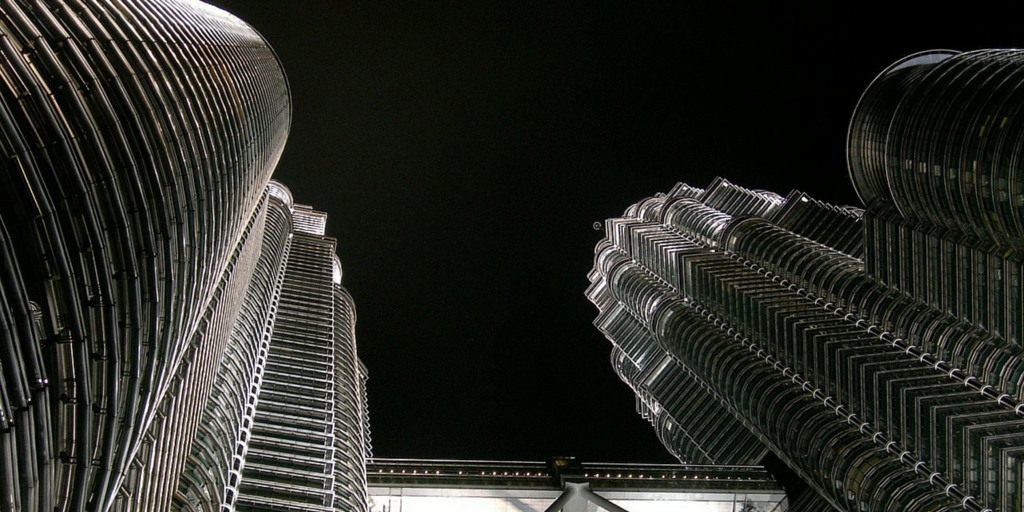My husband and I recently returned from vacationing in Kuala Lumpur, Malaysia, a highly multiethnic city of 1.67 million people in a metro area consisting of 7.9 million people. The city itself is predicted to grow to 2.2 million by 2020. Kuala Lumpur is a global city, offering international financial services, headquarters to multinational corporations, a center for new ideas and innovation, and much more. The sixth, twelfth, and twenty-second largest malls in the world are located in the greater Kuala Lumpur metro area. Most people there speak English, and directional signs are in English, making it an easy city for English speakers to navigate the city.
A Restricted Gospel
Kuala Lumpur has many people groups, including Bangladeshi, Bhami, Cham, Iranian, Nepali, Tamil, Pakistani, Rohingya, Somali, Sudanese, Syrian, and Vietnamese. According to the 2015 World Review, the religious makeup of Kuala Lumpur is 46% Islam, 36% Buddhist, 8.5% Hindu, 6% Christian, 1% Taoist. 2% constitute other religions. In the country of Malaysia, Muslims will make up 72.4% of Malaysia’s population in 2050, compared to 63.7% in 2010. It is illegal to share the gospel with Malay Muslims, illegal to use the name Allah when referring to God, and illegal to contextualize the gospel so that a Muslim can understand scriptures.
Naturally, just as many of you would, I began imagining what evangelism and church planting would look like in Malaysia. What follows here should not be taken as Holy-Spirit-breathed direction or as a correct way to think about these matters. It is simply meant to encourage strategic thinking about regions which we have perhaps not given a lot of thought regarding the disciple-making task.
A Few Ideas
1. Existing churches are afraid that if they witness to Malay Muslims, their buildings will be taken from them. How can outsiders help scatter gospel seed in ways that will not hinder Christian nationals?
2. Every Friday afternoon, Muslim men are in mosques praying (we visited an 8,000-kneeler mosque, and it was by no means the largest). This seems to present an opportune time for women to gather together, eat together, and enjoy time with one another. What else could happen during these Friday “women only” times?
3. Shopping-mall culture is huge. These vertical malls are home to office space, movie theatres, ice rinks, roller coasters, children’s playgrounds, and more. In the tropics they provide air-conditioned space. Malls have halal food courts, which serve as a safety net that allows Malays and non-Malays to eat together. This seems especially true for young adults. How can we capitalize on mall space for meeting people? What about multi-ethnic and international churches that meet in malls?
4. Nearby Singapore has a stronger economy than Malaysia. Many Malaysians leave their homes during the workweek for jobs in Singapore, where it is not illegal to share one’s faith. What about weekday churches in Singapore that reach out to the Malay Muslims who will return every weekend to places where the gospel is not as accessible?
5. Approximately 20% of Kuala Lumpur’s work force are refugees from fifty-two countries. While refugee groups are permitted there, most refugees are not legally permitted to work, and their children cannot attend the country’s public schools. What kinds of ministry of presence might be practiced among these numerous refugee groups?
6. There are lots of excellent universities in Kuala Lumpur. Students throng the areas near universities. We met a young man who senses a call to start a church with young students. We saw his community and were highly impressed with both the need of the community and the capacity of this planter. Churches are needed that minister among the young, but that is a difficult call for churches that would prefer keeping the generations together in their churches.
Imagine with Us
So, imagine evangelism and imagine church. Imagine the support systems and the prayer needs in places where church planting is difficult. Imagine what you can do, I can do, we can do. And let us be grateful for our own church-planting situations in North America, even when the going is really tough.
[Tweet “”imagine evangelism and imagine church” ~Linda Bergquist @sfwoman”]
Discover V3 Church Planting Partnerships!
Share this Post

